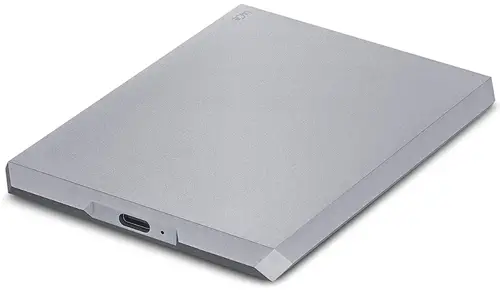
- #External hard drive for macbook pro 4t portable
- #External hard drive for macbook pro 4t mac
- #External hard drive for macbook pro 4t windows
NAS drives are also loaded with a simple computer operating system, allowing you to browse their file contents, view photos and videos, all from a remote location. But unlike a normal external hard drive, a NAS drive adds a network connection, so it can be linked via your internet router to your home network and the web. It allows your entire photo and video collection to be stored in one physical location in your home or studio, just like a conventional external hard drive.


However, if you want to use them with Time Machine, they'll need to be reformatted, but it's a simple procedure.Ī NAS (Network Attached Storage) drive is essentially an external hard drive on steroids.
#External hard drive for macbook pro 4t windows
It's slower on paper, but will operate at similar speeds to the Extreme Pro when connected to a USB 3.2 port.Īlso bear in mind that both these drives will be pre-formatted to work with both Windows and Mac.
#External hard drive for macbook pro 4t portable

That means this SSD can still unleash its maximum speed potential of up to 2000MB/s, really putting the 'extreme' in Extreme Pro.Ĭapacities range from 500GB to 2TB, which isn't all that much by today's standards.
#External hard drive for macbook pro 4t mac
But the USB 4 ports on an M1 Mac are backward compatible with USB 3.2 Gen 2x2. This is linked to your Mac via the short-lived USB 3.2 Gen 2x2 connection: the USB generation that directly preceded the current USB 4 standard. Sadly, buying a hard drive that can utilise this tech is currently almost impossible, but this SanDisk drive is the next best thing.Īlthough strictly speaking this is a portable hard drive, rather than a device that lives on your desk, there's no reason why it can't be used in place of a bigger external desktop hard drive.Īnd while most external drives use older, slower mechanical hard disk drives to store your data, the Extreme Pro Portable SSD V2 is based around a blazing fast NVMe SSD. Hopefully you now know which options above to pick from the list of best formats for external hard drives, which can save your bacon when making the wrong choice can lead to a situation where an external disk just won’t plug-and-play.If you have one of the latest M1 MacBooks or iMacs, you're able to connect a hard drive using the latest Thunderbolt 4/USB 4 interface. Picking the wrong one can turn into a real pain when you have to backup and reformat an entire drive because it won’t work for its intended purpose. Picking a format for your external drive can be pretty confusing. In fact, most devices have an internal SD card formatting routine, so we recommend you simply let the intended device format the card. exFAT is still a good choice if your DSLR (for example) supports it, but follow the manufacturer’s recommendation. With SD cards, your choice should be entirely driven by which formats the devices you use support. However, that’s set to change in the future. Of course, if you’re also going to use your thumb drive on your current Linux machine, exFAT won’t work at the time of writing. Especially if you also want to use your thumb drive with iPads, iPhones and Macs.įAT32 is a fallback if you want to use your thumb drive with older devices that don’t support exFAT. Which means you may want to use large files, such as HD video files, on your thumb drive. With the fairly cheap yet large flash drives we have today, there’s some overlap in the use cases for thumb drives and external hard drives. SD cards and USB thumb drives are still an important part of our digital lives, so which formats should you pick? The choice for the best format for external hard drives involves different considerations compared to other forms of external storage. Unfortunately, Linux does not yet have support for exFAT, but that is reportedly set to change with the release of Kernel 5.4.

The most compatible option is FAT32, but as we mentioned above it has a hard 4GB limit on file sizes. However, Linux supports NTFS, which makes for a decent go-between if you have both Windows and Linux machines. Linux has its own proprietary EXT formats and if you are only going to use your external drive with a Linux machine, you can safely go ahead and pick that format. Linux distributions such as Ubuntu Linux are becoming more popular by the day, but are still relatively niche overall.


 0 kommentar(er)
0 kommentar(er)
